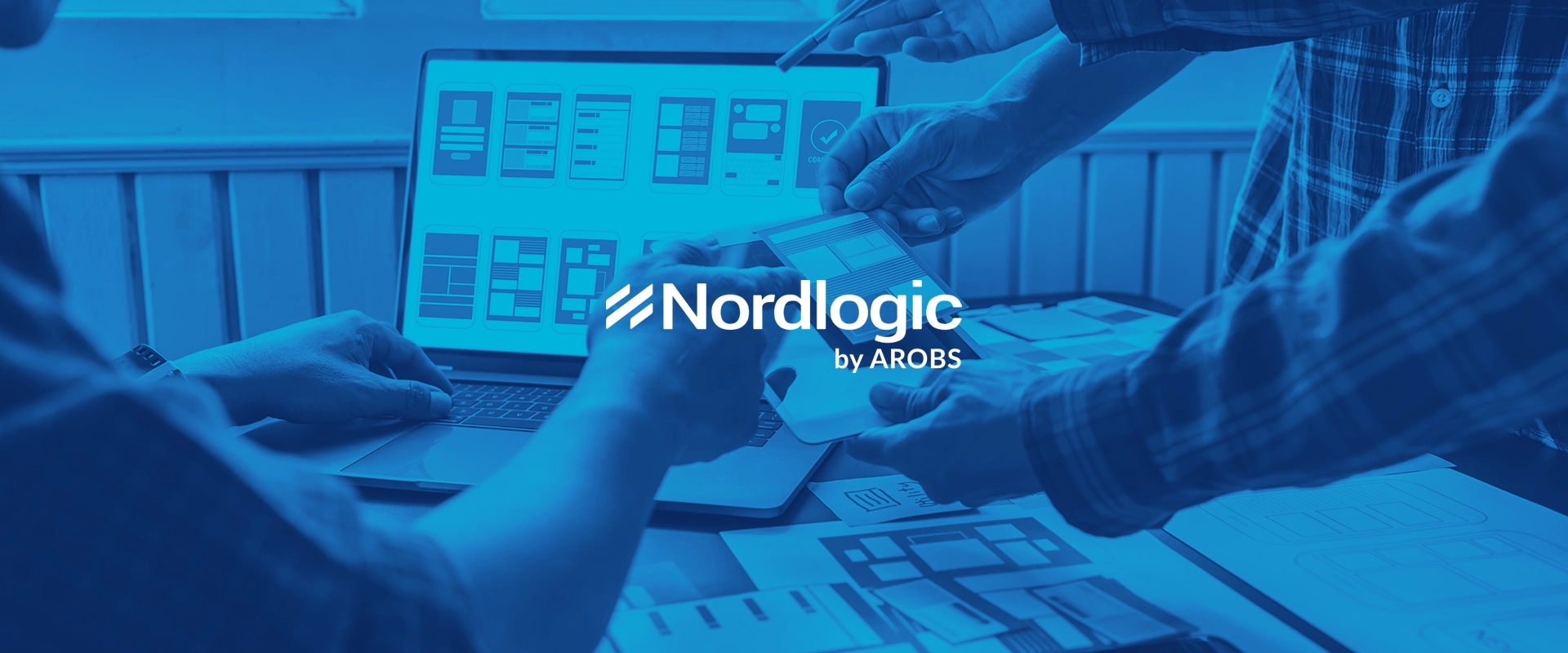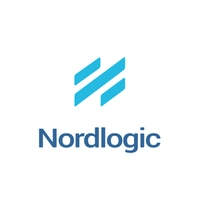MVP SOFTWARE DEVELOPMENT IS AN EFFICIENT WAY OF VALIDATING BUSINESS IDEAS
There are many misconceptions about the MVP concept, which means that simply defining it is not enough. Nevertheless, a definition is a good starting point. MVP stands for Minimum Viable Product — a term introduced by Eric Ries in Lean Startup. While MVP results in a “product,” the main point is in the process of gathering data — MVP software development is a process of learning and exploration.
The idea behind MVP development is to collect as much validated information about the potential users as possible with the least amount of effort. That is why measuring the results in terms of “products” is not accurate as the “product” is not the case — MVP allows us to find out whether a prospective product is needed, feasible, and worth making.
The MVP approach means building a working version of a product to test the concept as a whole. This requires going through all the development stages and paying attention to the product’s functionality, usability, and design to collect as much user and usage data as possible.
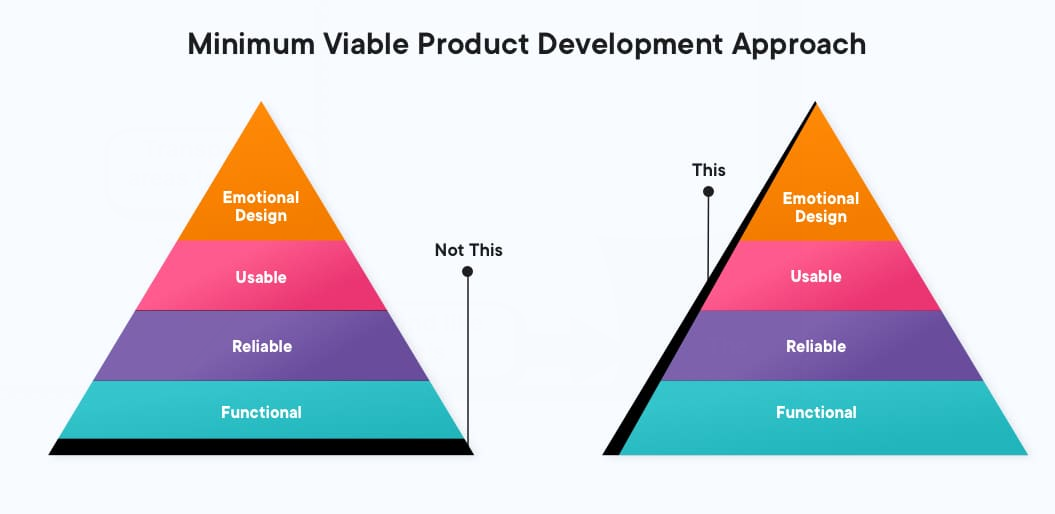
Source: Net Solutions
As a result, MVP can be seen as a mindset that stands behind the development process due to its focus on learning and user-oriented approach which fits well with agile methodology and lean design practices. This article focuses more on the relationship between MVP, agile and lean design.
MVP software development allows companies and startups to save time and money on product design
In contrast with MMF (Minimum Marketable Feature) and MMP (Minimum Marketable Product), MVP is not focused on earning. MVP is not a prototype because it is an actual working product, but it is also not a full product yet. This is important because these are some of the points of confusion associated with MVP development.

Source: e-Zest
The main purpose of MVP development is to test business assumptions by creating an early usable version of a potential product to collect customer feedback. The feedback data then can be used to develop a full-scale product, to transform the product into something else or to abandon the product idea.
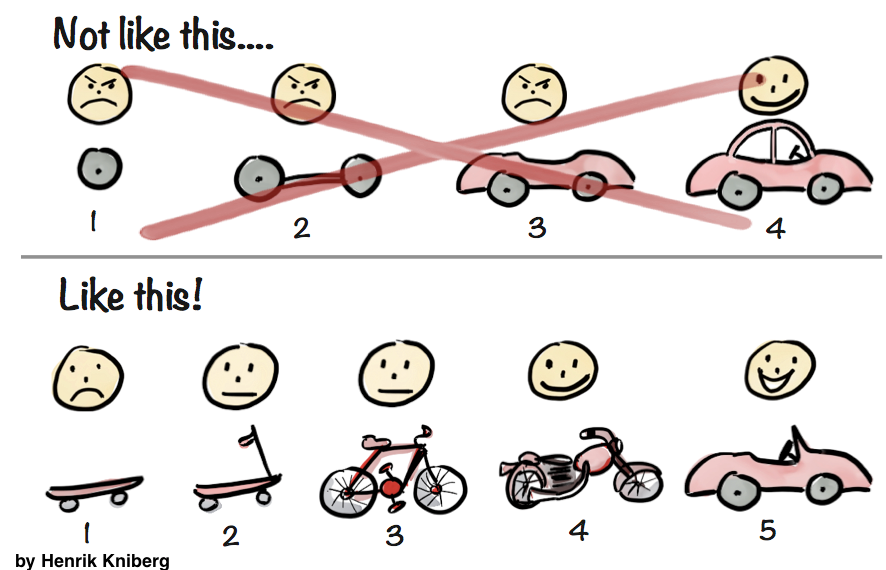
Source: Interaction Design Foundation
Companies and startups turn to MVP development because it is cost-efficient and less risky than full-scale product development. Developing a full-scale product could sometimes cost more than $200,000 which is a serious investment. Timewise, it usually takes between 1.5 and 3 months to develop an MVP, while developing a full product could take a minimum of 6 months. This, however, is a rough estimate, and the final numbers depend on the actual project complexity and scope.
Collecting early feedback without initial major spending is especially important for startups, as 42% of them fail because there is no market need for their products, 29% fail because they run out of cash, and 17% fail because they create user-unfriendly products. MVP development could reduce these risks as it allows testing and adjusting the product to the specific market and user needs before investing in it.
MVPs are tools for testing business ideas in the Lean Startup approach to product development
MVP development is a part of the Lean Startup methodology that presumes continuous user feedback in the product design process. This means that users stand at the center of product development, which allows testing real-world applications of business ideas before letting them onto the market. Lean Startup is an iterative agile practice and resembles a scientific approach where experiments are used to test hypotheses.
According to a publication by Eisenman, Ries and Dillard, a hypothesis-driven approach allows entrepreneurs to address the uncertainty associated with new product development with a series of MVPs. The latter is needed to gain sufficient information to either falsify or confirm the initial business model hypothesis, while each particular MVP represents the minimum set of activities required to disprove an initial hypothesis.
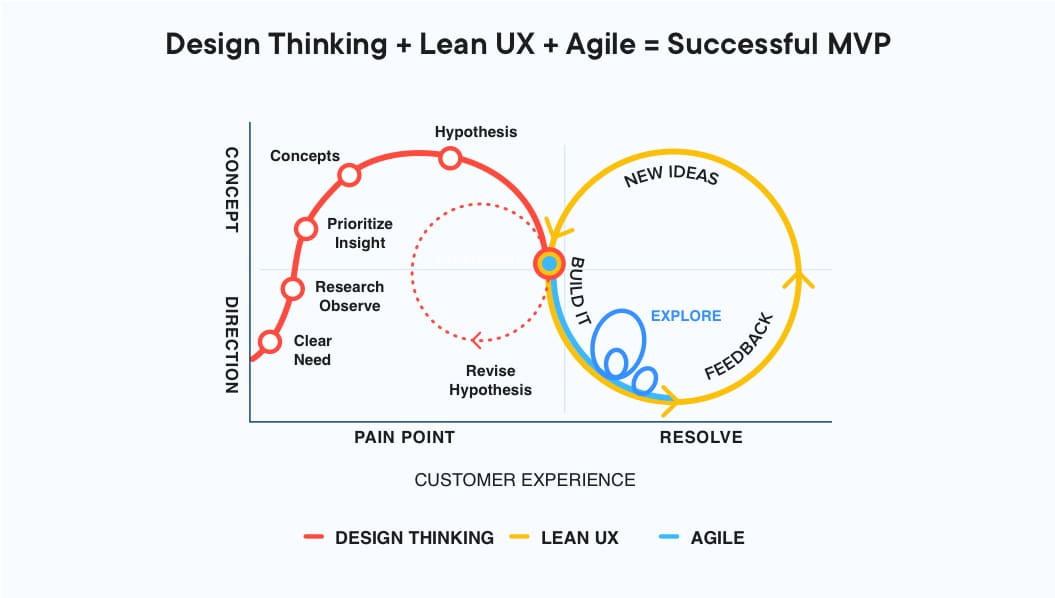
Source: Net Solutions
There are different kinds of hypotheses (with corresponding research questions) that could be tested with Lean Startup, such as persona hypotheses (does a particular kind of user exist?), problem hypotheses (does this product address the problems of our customers?), value hypotheses (will anybody use/buy the product?), customer creation hypotheses (how the product gets to the user?) and usability hypotheses (is this the way the product is to be used?).
The value hypothesis is the one that MVP agile development is usually aimed to address. As a result, Lean Startup methodology presumes two main practices that lie at the core of product design: the scientific method (hypothesis testing) and the use of small batches (MVP development). This combination is employed in continuous assessment and testing, where MVP is an efficient tool for validating business ideas.
MVP development is an efficient way of assessing product value for potential users
There are several ways to validate value hypotheses with MVP. The most common are Concierge MVP, The Wizard of Oz (WoO) MVP, and Sales MVP (or Smoke Test MVP).
Concierge MVP is a way of testing business hypotheses by replacing a technological solution with humans. It is used to find out whether there will be a demand for the proposed product without actually building the product.
An example of this approach could be a shopping list app. Instead of building a fully functional service, an entrepreneur could physically go to a grocery store and observe how customers shop, ask them about their shopping practices, and shop with them, performing the features of a proposed app, such as scanning products, looking for discounts, and dividing purchases into categories.
The benefit of such a procedure is getting first-hand user experience and feedback without actually building an app. The downfall is that the results and experience could be biased because what works in interpersonal encounters does not necessarily work the same way via technology.
The Wizard of Oz MVP is similar in that there is no fully working software behind the interface. Similar to Concierge MVP, the features are executed by a human while the user is not aware of this. For example, a person could communicate with users online pretending to be a chatbot to gather data on the kinds of features the users expect a chatbot to have, such as placing orders or booking a table in a restaurant.
Sales MVP (or Smoke Test MVP) tests whether one could sell something before actually having what is being sold. Kickstarter and other crowdfunding campaigns could be characterized as Sales MVPs as they usually offer something that is not yet fully developed to attract users.
The most common tactics in Lean Startup regarding the Sales MVP are running online ads, such as Google AdWords campaigns, to measure click-through rate (CTR) and bringing customers to a specific landing page where they can sign up for an email list after reading a product proposal or a text with some kind of proposition.
Sales MVP creates important user data, but this data is only useful if done in a combination with other hypothesis validation tests, such as Concierge MVP or The Wizard of Oz MVP. As mentioned earlier, MVP in agile is a continuous process of experimental data collection, analysis, and product development process adjustment. This means that MVP development is a user-oriented iterative approach to product design where exploration and creation of knowledge about the prospective product is a key element and a key activity.
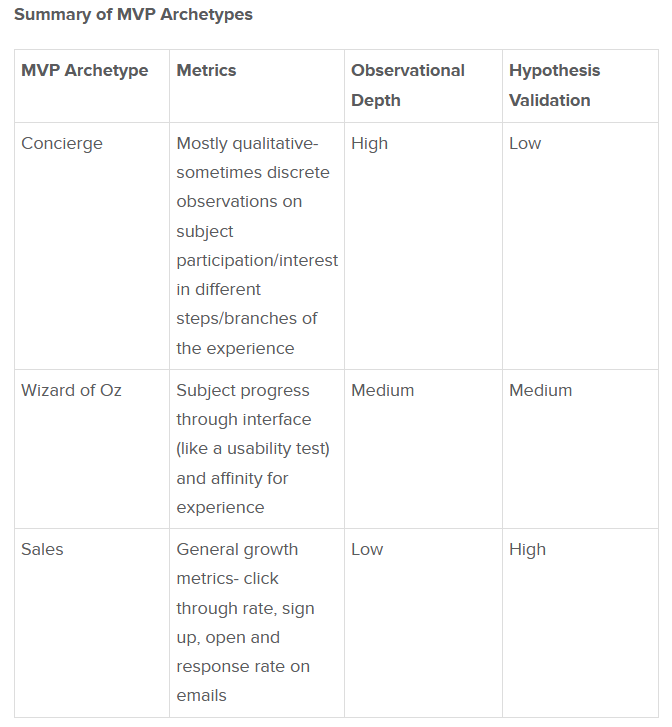
Source: COWAN+
Conclusion: MVP approach to product design allows making informed business decisions at any development stage
MVP is needed for collecting user and usage data that allows us to validate or disprove the initial hypotheses about the proposed business model. The purpose of MVP is not simply to create a version of a working product but mostly to adjust the product vision based on a series of experimental tests. MVP is a tool for building a final product, not a final purpose of product development.
MVP development in Lean Startup is an iterative step-by-step movement toward the creation of a final product. This means that adjustments to the development process could be easily made at each stage in contrast to the big design approach, where the development process is aimed at building a final product according to predefined requirements and specifications.
There are many ways of testing business hypotheses with MVPs, such as Concierge MVP, The Wizard of the Oz MVP, or Sales MVP. Each of these tests allows collection of different types of data (quantitative, qualitative, or a combination of both) and different amounts of information about user behavior and market environment. This means that using a combination of tests is a more efficient way of validating business model ideas with MVP development.
Article by
